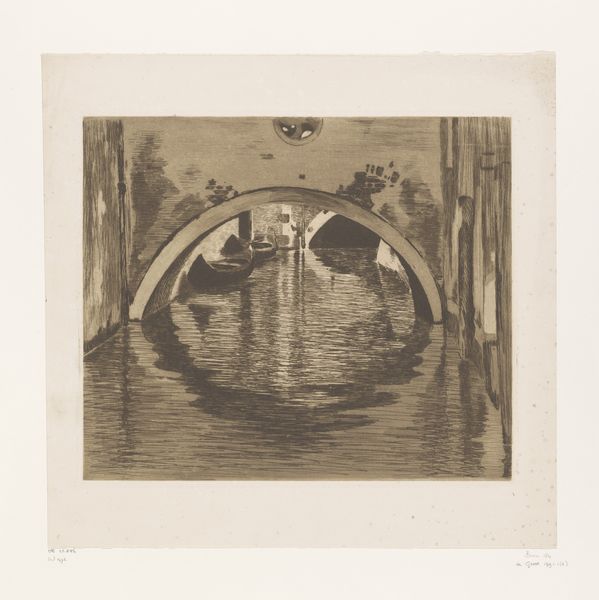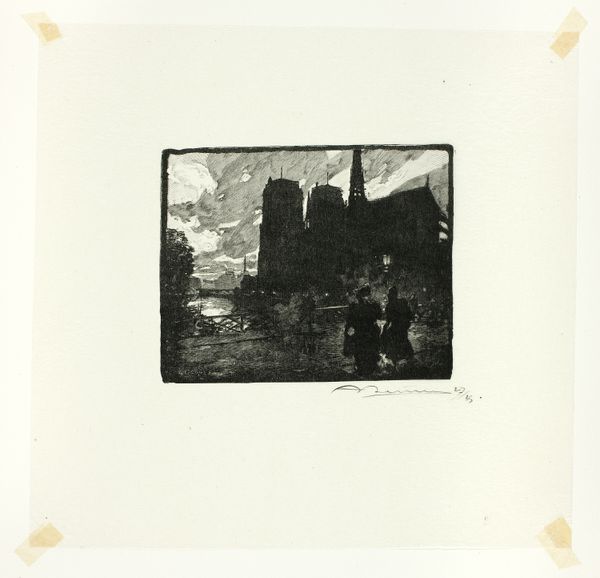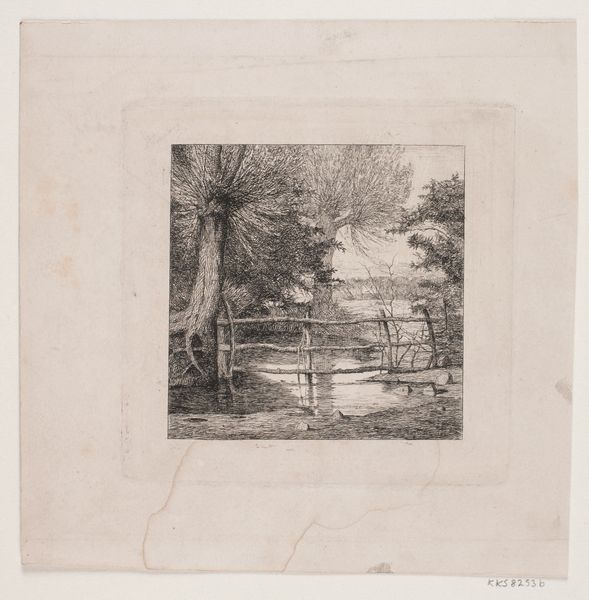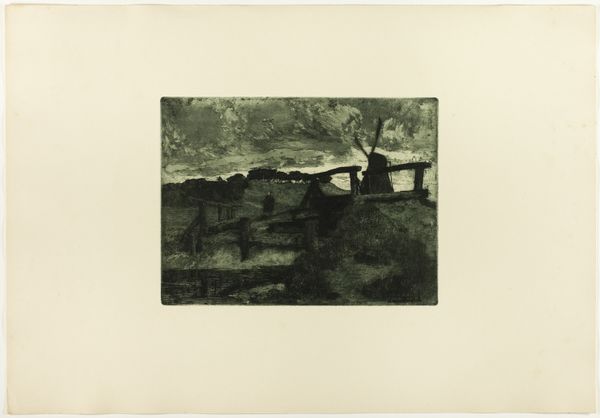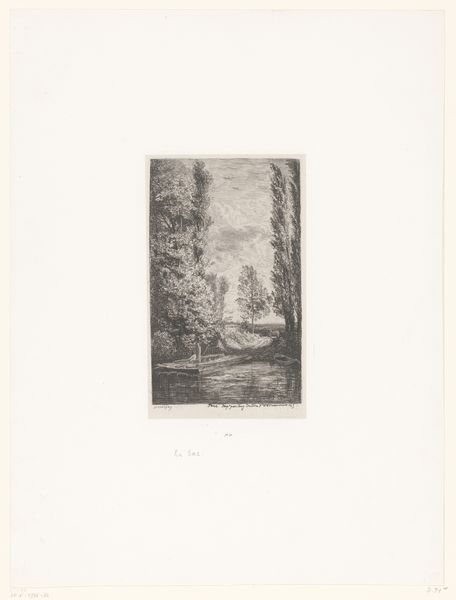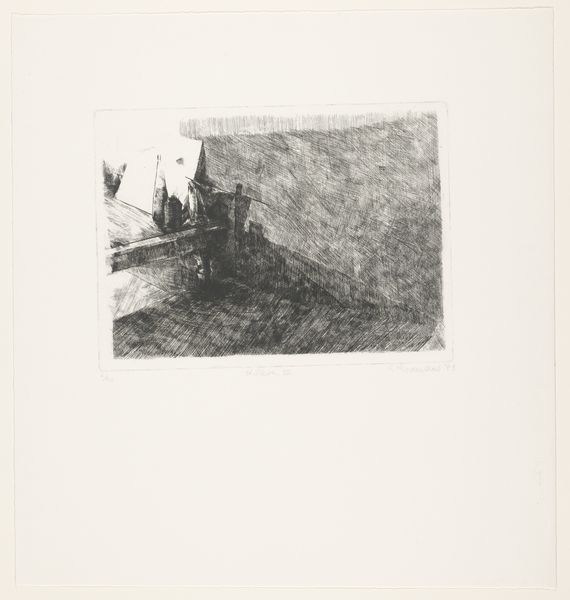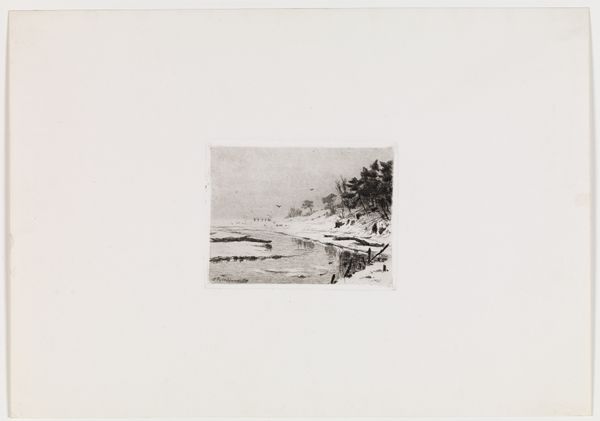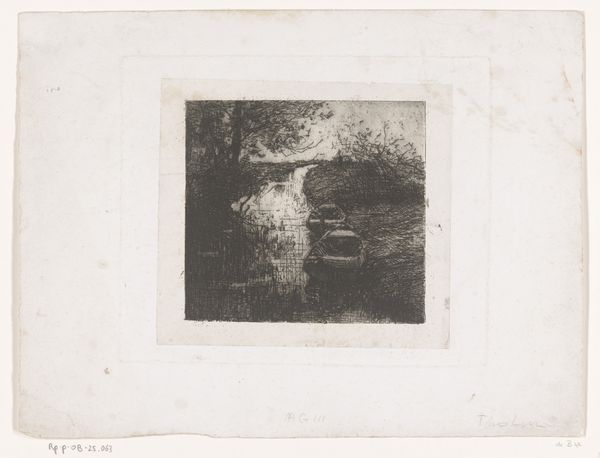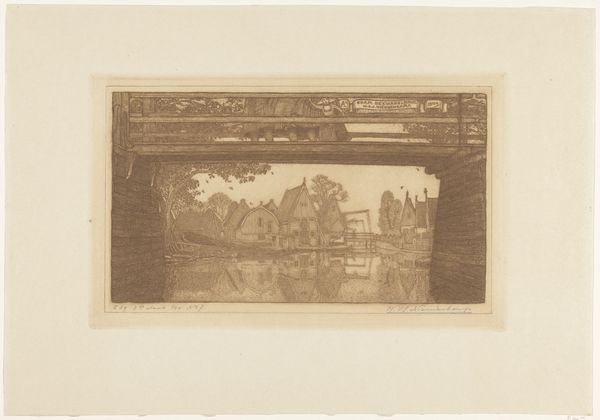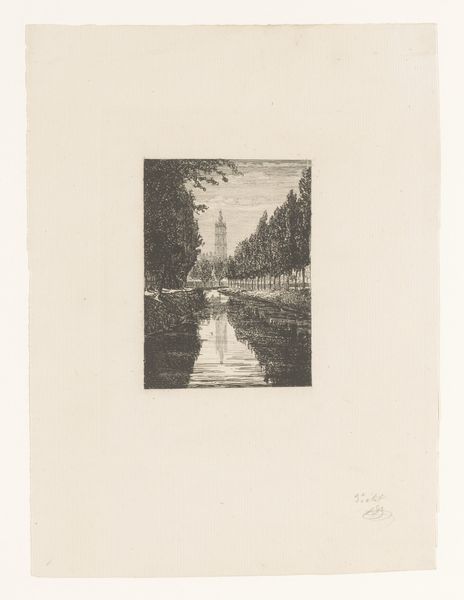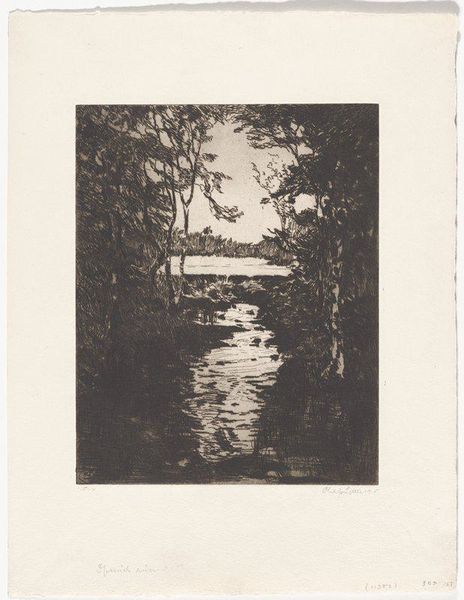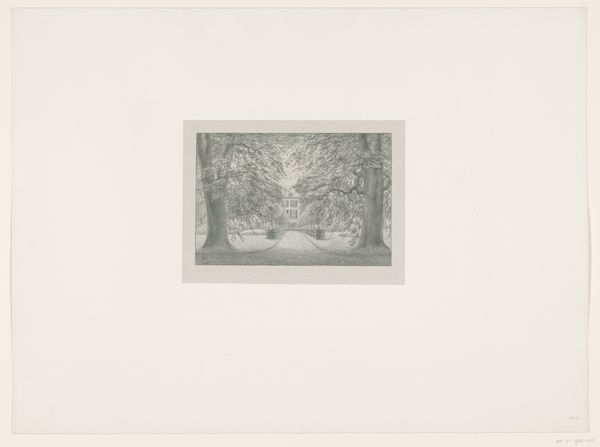
Gezicht op een kanaal onder een brug en de achtergevels van huizen c. 1900
0:00
0:00
Dimensions: height 281 mm, width 310 mm
Copyright: Rijks Museum: Open Domain
Willem Witsen made this aquatint, "View of a Canal Under a Bridge and the Rear Facades of Houses," using a copper plate and acid. This printmaking technique allows for subtle tonal variations. Witsen captures the murky reflections on the water's surface. To make an aquatint like this, the artist would have etched the design into a metal plate. The plate is then submerged in acid, creating tiny crevices that hold ink. When printed, these crevices produce the rich blacks and grays. Aquatint emerged in the 18th century, when there was a market for relatively inexpensive prints that could mimic the appearance of watercolor drawings. The atmospheric qualities you see here owe everything to that history. Witsen and other artists in the Netherlands revived printmaking around 1900. They were interested in etching as an alternative to industrial modes of production. By emphasizing this traditional graphic medium, artists like Witsen challenged conventional artistic hierarchies. They gave new life to a technique with a unique capacity for capturing subtle light and shadow.
Comments
No comments
Be the first to comment and join the conversation on the ultimate creative platform.

